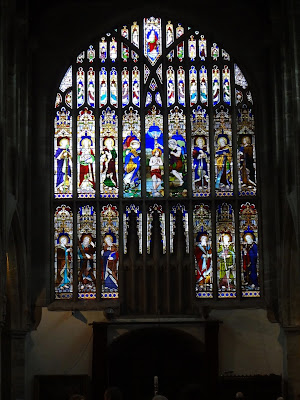(There's time for a jigsaw puzzle when you're retired.)
One of the regular email notices I get from LinkedIn is about my contacts’ work anniversaries. Most of them are pretty straightforward: Congratulate Lucy Brown. Lucy is having a work anniversary – 20 years this month working at CBC.
I’m often interested to see the notice but I don’t usually offer congratulations. I would if it seemed spectacular – like 50 years at the same job or something like that.
There is one notice though that always makes me smile. Lately, it’s also made me think. It’s this one, which I see a lot – different names, same message:
Congratulate Jack Sprat. Jack is having a work anniversary – 10 years this September working at retired.
It makes me smile because it’s awkwardly expressed. It makes me think because I hope it’s true.
Retiring from one’s life work is a huge step. For many people – usually men – it can be a traumatic end to the only identity they’ve ever known. We all know the stories of men who retire and too often, are dead within a year or two.
My father worked for NB Power. I’m sure they had no flexibility around retirement age and Dad retired at age 65. He never expressed it but I’m pretty sure he felt vital and energetic and felt put out to pasture.
He was a stationary engineer and within a fairly short time, he was hired to work at one of the mills near our town. He worked there for a number of happy years, well into his 70s. He was lucky because I’m pretty sure that kept him alive.
Whenever I hear people talking about looking forward to retirement, I always make a point of asking, “And what are your plans?” I don’t always get an answer that suits me but I try to make people think about it. I firmly believe that everyone needs a reason to get up in the morning. (Well, not too early, of course.)
I never use the word “retired” about my own life. (It’s well-known that I deny any suggestion that might involve aging.) When I’m out and about and people ask me if I’m retired, I always say no. I’m a writer and editor and I always have some evidence I can provide to show that I’m writing.
Dan (my husband) has been advised not to refer to himself as retired because people will look to him first when they want someone to volunteer for something. He does some excellent volunteer work but he also keeps busy at a whole variety of things. I tell Dan he's too young to be retired.
I appreciate being busy – retired or not – and my advice to anyone who is nearing retirement is: make definite plans about what you’re going to do with yourself. It really isn’t that enjoyable to get up in the morning with nothing at all to do although, to be sure, it’s nice if your daily agenda is made up of things you like to do.
The more I think about it, the more I think LinkedIn is on to something when they congratulate their members for “working at retired.”























































 Solid silver
Solid silver


 Fabergé
Fabergé Fabergé detail
Fabergé detail Two art lovers
Two art lovers
